Art and education are hands-on fields, so it's no wonder our program is designed to be the same way.
When you study to become an art educator, you benefit from a manageable series of art core and foundation courses followed by strong clinical and student teaching components. That means you put learning into action from the beginning.
Starting your first semester in the program, you will be in a K-12 art classroom to gain pre-professional clinical hours in the field. From start to finish, the goal of this model is surround you with support each and every semester. In your final semester, you will top off the concentration with a semester-long student teaching experience in a K-12 school.
When combined with your passion for art, this professional level education and training provides you with the path to launch your successful career as a licensed art teacher in the state of Wisconsin.
All that, plus an incredible faculty who are practicing professionals in their fields and in their mediums. With so much expertise to support you, there is no doubt you will inspire and support generations of learners when you become an art educator.
Concentration Competencies and Outcomes
The Art Education Concentration provides students with opportunities to develop competencies in the following areas:
- Know and reference the history and theories of art education.
- Develop curriculum and projects that align with larger district-state goals and standards.
- Develop a working understanding of appropriate educational approaches for developmental age.
- Support student growth using appropriate approaches.
- Effectively align and diversify approaches to curriculum for specific student needs.
- Use broad and varied instructional media ranging from analog to digital media.
- Understand and use group and individual motivations in creating leaning environments.
- Communicate effectively across developmental stages.
- Effectively plan and integrate instructional methods.
- Use formal and informal assessment strategies to measure student and programs outcomes.
- Use reflective practices for the purpose of professional advancement and advanced efficacy.
- Effectively engage with the community via professional organization, professional development, community arts group or art volunteer work to build a professional network.
Major and Concentration Requirements
The art licensure Bachelor’s degree program follows major and degree requirements of UW-Parkside. Candidates must complete general education, university skills, and foreign language requirements and the art major requirements:
47 credits in the art core curriculum
34 credits in art education concentration
Requirements for admission to the Art Education concentration follow the requirements established in the approved Educator Preparation Program. Candidates who already hold a Bachelor’s degree in Art must meet all requirements for admission to the Art Education concentration and must complete 34 credits in Art Education coursework.
Requirements for the Art Major (47 credits)
Art majors must maintain at least a 2.5 grade point average in the major to remain in the program.
CORE CURRICULUM
Foundation Studio and Graphic Design Courses (12 credits)
Foundation Art History Courses (6 credits)
Developmental Drawing (3 credits)
Two-Dimensional Experience (6 credits)
Three-Dimensional Experience (6 credits)
Graphic Design Experience (3 credits)
Additional Art History or related coursework (6 credits)
Professional Practice (2 credits)
Upper Division Elective (3 credits)
Requirements for Art Education Concentration (34 credits)
A minimum 2.75 cumulative GPA is required to enter and exit the concentration. Students are dually accepted to the Art and Design Department and Institute for Professional Educator Development (IPED) Teacher Preparation program. Check with advisors to understand IPED’s prerequisites, minimum GPA, and benchmarks.
CONCENTRATION
Art Education Methods Courses (6 credits)
ART 325 | Art Ed. Methods for Elementary-Middle School | 3 credits
ART 326 | Art Ed. Methods for High School | 3 credits
Professional Educator Development Courses (28 credits)
EDU 100 | Introduction to Teaching Profession | 1 credit
EDU 211 | Child and Adolescent Development | 3 credits
EDU 300 | Creating Effective Learning Environments | 1 credit
EDU 304 | Context and Culture in Learning Environments | 3 credits
EDU 310 | Family School and Community Partnerships | 1 credit
EDU 322 | Teaching Exceptional Learners | 3 cr
EDU 430 | Using Action Research to Improve Instruction | 2 credits
EDU 440 | Teacher Preparation Portfolio Design | 2 credits
EDU 420 | Residency Seminar | 2 credits
EDU 425 | Residency | 10 credits
Career Opportunities
The primary goal for this program is to provide professional level education and training for future art educators in the context of K-12 teaching in the state of Wisconsin.
This program can also be compeled as a post-baccalaureate program for candidates who already hold a degree in Art, leading to licensure only. This licensure requires a Bachelor’s degree.
student clubs
Art Club is the campus student organization that encourages a variety of student-directed events including a visiting artist series and an annual juried student exhibit to foster a greater awareness and participation in the visual arts. Learn more about Student Organizations.
See what our students have to say.
PROGRAM CONTACT INFO
Kristen Bartel, Associate Professor of Art
bartelk@uwp.edu
Katie Abbott-Davis, Academic Advisor
abbottk@uwp.edu




